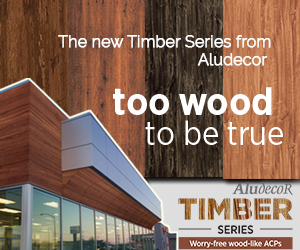Construction materials are essential in developing the built environment because they serve as the foundation for structures that impact our health and the environment. However, some materials have proven to be hazardous and have already been banned or are being phased out.
In this article, we look at the reasons for the decline of certain construction materials, the hazards they pose, and what might replace them.
Health Risks from Materials:




Lead-based Paint: Lead is a toxic element that was once used to increase paint’s durability and resistance to moisture and corrosion. Although legal in some countries, lead exposure can cause serious health problems, including the nervous system, kidney damage, and developmental delays in children.


Formaldehyde: It is a colourless, highly flammable gas with a strong odour commonly used to manufacture medium-density fibreboard (MDF) and particleboard. High levels of exposure can cause skin, eye, nose, and throat irritation and increase the risk of certain cancers.


PVC: When burned, PVC, widely used in water pipes, can emit toxic chemicals.
Read also: Aludecor Zinc Composite Panels -A Sustainable Choice for Your Building
Environmental Hazards from Materials:


Chemical-Based Adhesives and Sealants: In addition to endangering human health, chemical-based adhesives and sealants endanger the environment. These materials emit pollutants into the air during production and contribute to water pollution. They are also based on petroleum, contributing to resource depletion and environmental degradation.


Asphalt Shingles: Because of their low cost and high performance, asphalt shingles are widely used. They are made from petroleum, a non-renewable resource. However, due to high solar energy absorption, they contribute to greenhouse gas emissions and the formation of urban heat islands.
Read also: Decoding ACP Sheet Prices in India: What Influences the Cost?


Non-Recyclable Metals: Steel production consumes a lot of energy, contributing significantly to greenhouse gas emissions and climate change. While steel is now widely recycled, some metals, such as steel containing high levels of alloying elements such as chromium, nickel, and molybdenum, can be challenging to recycle. Furthermore, contamination with other materials such as adhesives, paints, or coatings of other materials can make the process more difficult, if not impossible, at times. As a result, it is critical to pay attention to the classification and proper destination of the recycled steel, as well as to avoid using elements that can make the process more difficult and costly.


Concrete: Despite its importance in construction, concrete production is energy-intensive, emits significant amounts of greenhouse gases, consumes vast amounts of water and raw materials, and is difficult to recycle. Alternative production methods are likely required to reduce the environmental impact.
Read also: Plywood vs. ACP Sheets – The New Age Construction Materials
Architects play a critical role in specifying safer and more environmentally responsible building materials. By doing so, they can help shape the built environment into a safer and more sustainable place for all. As the construction industry evolves, it is critical to stay informed about the materials we use and their impact on our health and the environment.


Architects play a critical role in specifying safer and more environmentally responsible building materials. By doing so, they can help shape the built environment into a safer and more sustainable place for all.
Zinc is an excellent example of a sustainable material that can help us restore the ecological balance and boost sustainability in the construction industry. It’s non-toxic, recyclable, and has a low carbon footprint. Architects around the world, over centuries, have been using materials like zinc to create a more sustainable built environment. Zinc is corrosion-resistant and can reflect sunlight, reducing energy consumption for cooling. It is a non-ferrous metal that excels at being lightweight and offers a corrosion protection solution for structures subjected to bad weather while also providing a creative solution to architectural design specifications. Additionally, it is a self-healing metal that can easily last more than 100 years. It’s also versatile, coming in various colors, finishes, and textures, and can be moulded into any shape or combined with other materials. Since the 18th century, zinc has been commonly used in European countries as a building material for covering roofs and facades and for gutters and downpipes. When laid correctly as a roof covering, it has lasted in excess of 100 years.
Read also: Aludecor Zinc Composite Panels – A Sustainable Choice for Your Building
Zinc has been extensively used in many global projects, like La Maison du Project in Paris and the Zinc Mine Museum in Germany, making them beautifully designed sustainable masterpieces. The new NATO headquarters in Brussels, Belgium, features an extensive use of zinc in its design. The building, completed in 2017, is one of the world’s largest and most sustainable office complexes, and zinc plays a critical role in its sustainability features.



